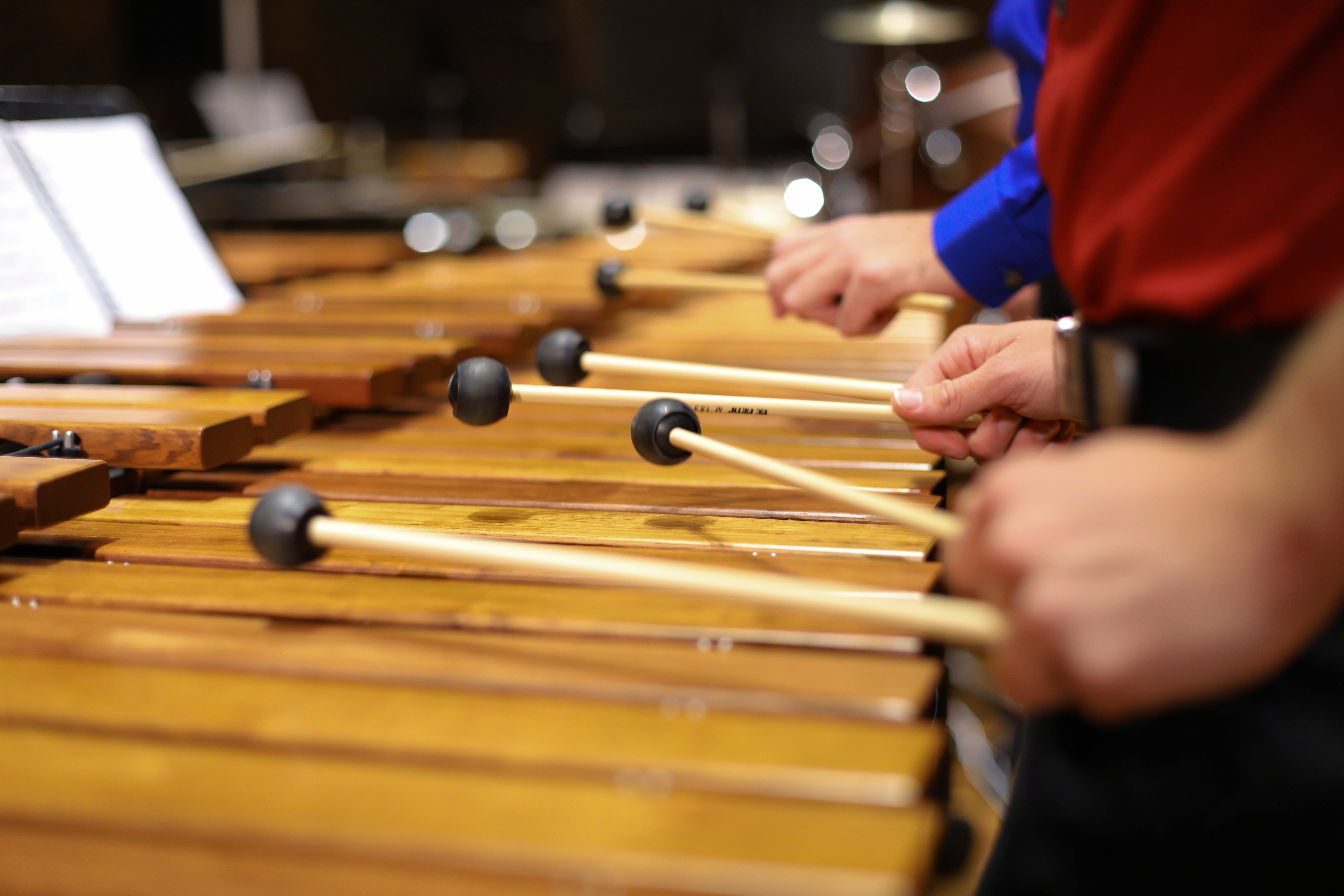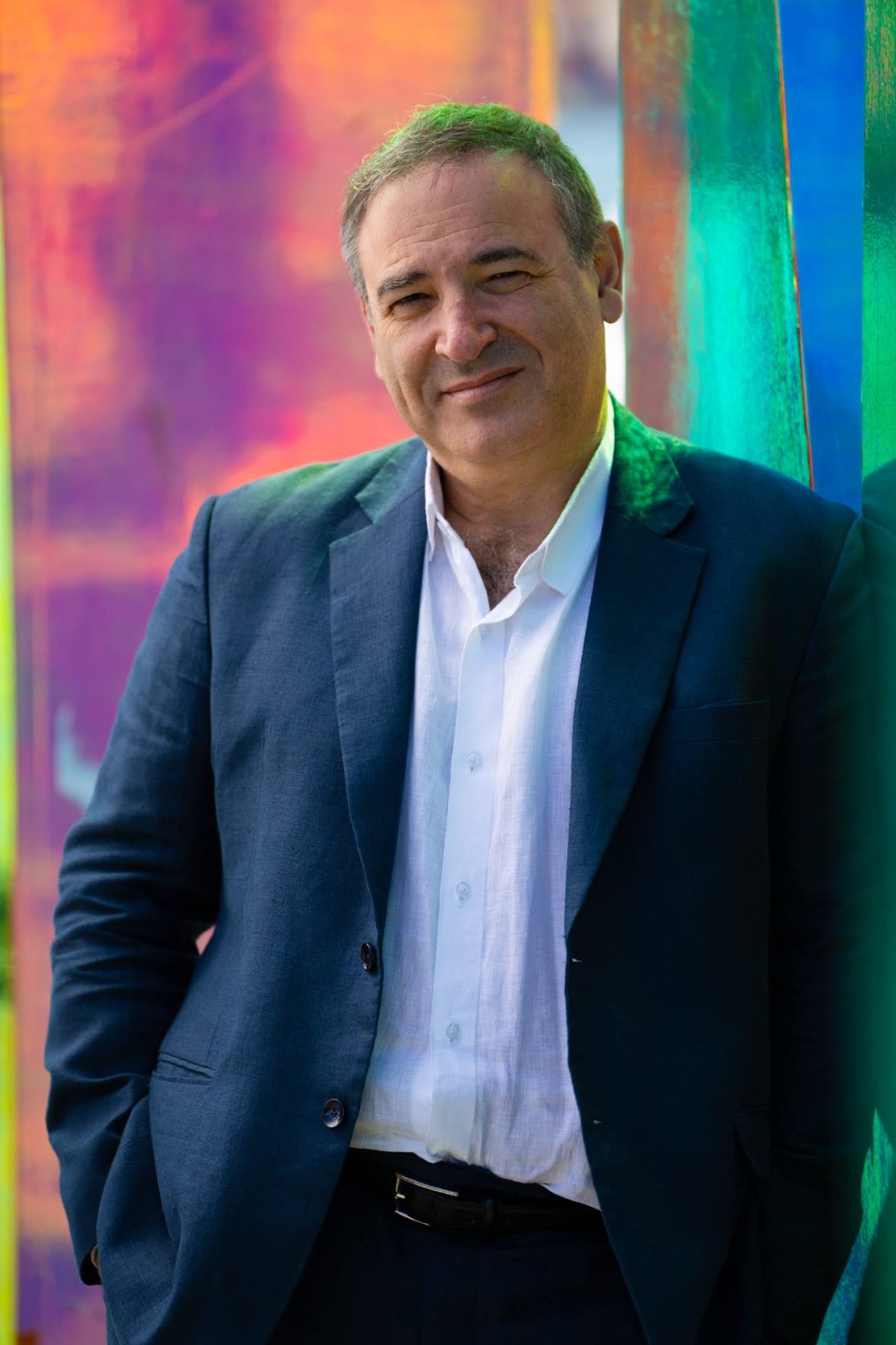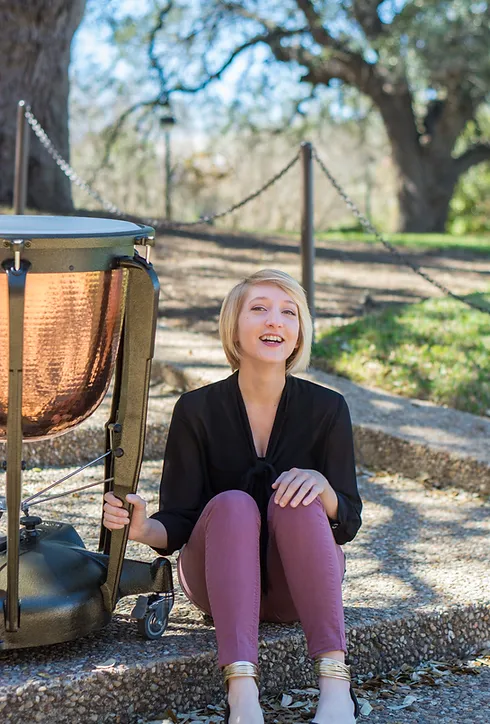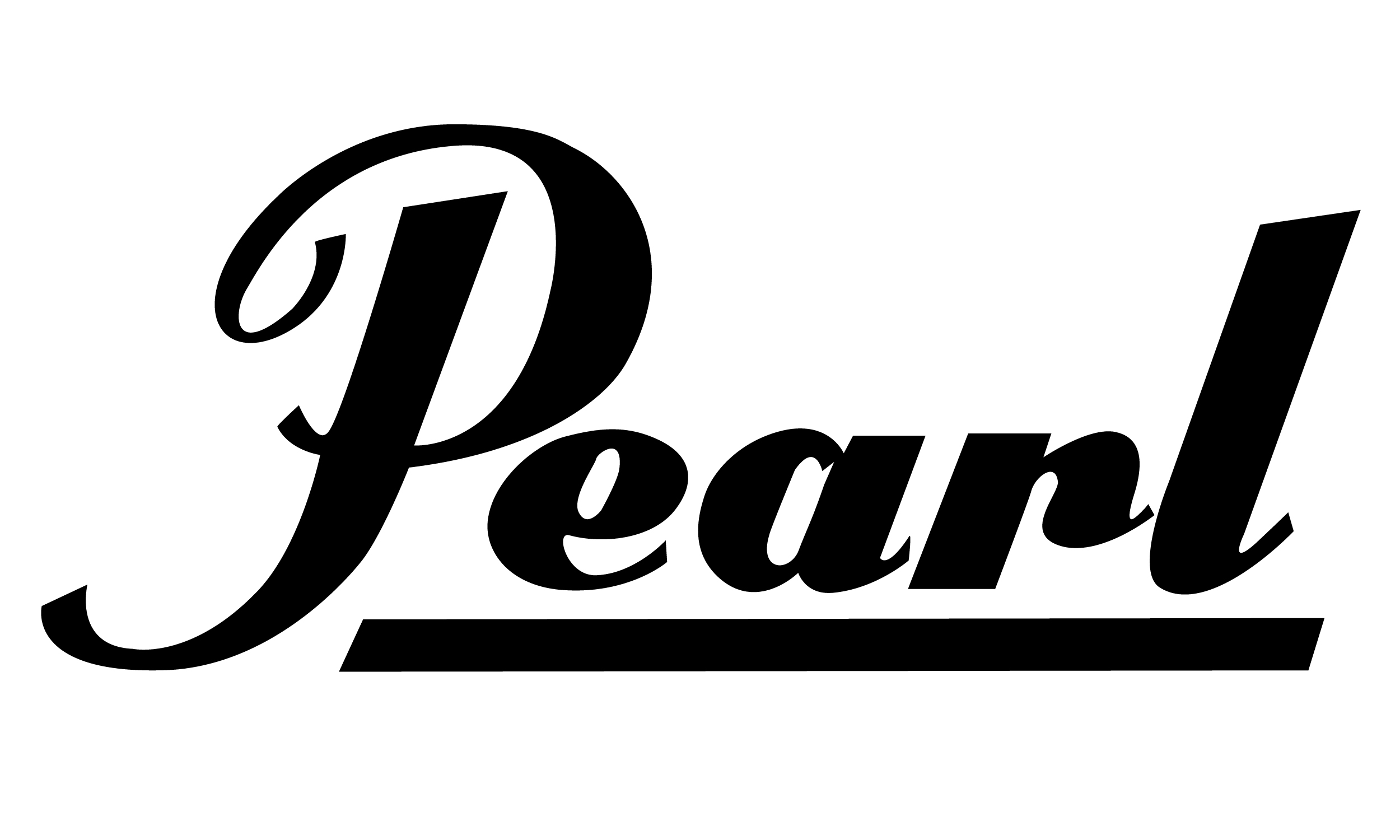
The Furman University Percussion Ensemble
Fall Concert
Special Guests: John Psathas, composer/Fabian Ziegler, feature performer/Emma Gierszal, Justin Lamb, Diana Loomer, guest percussionists
7pm, Sunday, November 10th, 2024
Daniel Recital Hall

Time Dilation (2019)
Francisco Perez

Notes
First predicted by Einstein through his special theory of relativity, “gravitational time dilation” is an astronomical phenomenon whereby it was theorized (and recently proven) that time is not an absolute unit of measure in our universe. Simply put, time dilation indicates that the faster an object in our universe travels, the more the “experience” of time is affected (slower) compared to another object in a different environment. This effect was dramatized in Christopher Nolan’s film, Interstellar, where an hour-long trek onto a planet near a supermassive blackhole (source of a large amount of gravity) lasted seven years on Earth.
Inspired by this phenomenon, Time Dilation is the result of my light exploration of this effect. Initiating with a 5-count riff, the work’s main motif permeates through a variety of harmonic and polyrhythmic structures to create an energetic atmosphere, dilating back and forth between metric feels.
Time Dilation was commissioned by James Campbell for the PASIC 2019 Collegiate All-Star Percussion Ensemble.
World Premiere: November 15, 2019 (Indianapolis, IN)
Available now through Tapspace Publications.
Aegean (2011) for percussion ensemble (arr. Omar Carmenates, 2015)
John Psathas

Aegean, arranged here for percussion ensemble by Omar Carmenates, is the second of two companion works written for piano trio, the other being Corybas. The works were commissioned by Ian Graham as a birthday gift for his wife Agi Lehar-Graham ( the original manuscript adds a little wordplay to the work’s title, spelling Aegean as Agi-Ian), and in grateful recognition of the New Zealand Chamber Soloists (NZCS) Piano Trio – Katherine Austin, Lara Hall and James Tennant.
Short and elegant, Aegean is perfect for trios wishing to add a dose of romance to a concert programme. The work is inspired in part by the view from my parents’ house, which overlooks the Aegean Sea. My substantial body of relentlessly high-energy works might lead one to assume that, in the case of Aegean the sea is visualised at its most stormy and tumultuous, the work being pushed forward with tempo surges depicting accelerated ocean currents.
Instead, we are presented with a scene in which a calm sea gently rises and falls – the piano’s odd-metered and softly articulated rhythmic figure evokes the irregular movements of the ocean’s surface, while passages that add repeated two-note semiquaver patterns in its upper staff mirror the glistening of sunlight on the water’s rippling contours. The peacefulness of Aegean is reinforced by the poise in the string writing that decorates the work’s unhurried journey.
The violin and cello rhythmically intertwine, with softly expressive solo passages emerging throughout. The registral arc of the violin peaks with a series of sustained high notes, underpinned by harmonic lifts courtesy of the cello and gently rippling piano. The work becomes bathed in warmth, like the sun emerging from behind a cloud, sending light to play once again on the Aegean’s undulating surface. The strings finally merge into rhythmic unison, sharing the idyllic melodic statement that concludes the work.
Corybas (2011) for percussion ensemble (arr. Omar Carmenates, 2015)
John Psathas
Notes
Arranged here for percussion ensemble by Omar Carmenates, Corybas, a dynamic, willful, and playful paino trio was commissioned by Ian Graham as a birthday gift for his wife Agi Lehar-Graham, and in grateful recognition of the New Zealand Chamber Soloists (NZCS) Piano Trio – Katherine Austin, Lara Hall and James Tennant. It's in stark contrast to the calmer, more serene, Aegean its companion work which can be thought of as its postlude.
As a composer, it was an intriguing situation to consider the influence of the work being a gift. So, I reached out to Ian for a reference point and discovered Aggie's interest in the Corybas flower. The name originates from the helmet-shaped flowers, resembling the headgear worn by the dancers of Corybas in Ancient Greece. The lively odd-metered rhythmic patterns in Corybas echo the vibrant movements of the dancers in Eastern European traditions, capturing their spirit and energy An exciting aspect of writing Corybas was getting my head around a particular dance groove found in Macedonia, which is in 17/8 time but divided into measures of 7/8, 6/8, and 4/8. It’s a fantastic groove but it takes some work to internalise it. I had to play with this groove in a way that would keep performers from going crazy because of the amount of variation and syncopation on top the 17/8 meter, otherwise the material would be stressful and unsatisfying to play instead of exciting. I’m very happy about Corybas because I think I got the balance right in this respect. Once performers internalise the underlying meter I see a transformation take place and they love to play it. Later on I found out the name of Ian and Aggies boat was called Corybas, so there is some kind of connection
Corybas (the original piano trio) opens with the unaccompanied piano holding the repetitive odd-metered groove that propels the work. In contrast with the piano’s brisk stream of notes, the cello and violin take turns with long, mournful pitches that rise out of, and then sink back into, the piano’s texture. The strings then build momentum through fusing their melodic lines with the piano’s groove, offering short syncopated accents and uniting for dramatic and thrilling phrases. The cyclic nature of the underlying groove is also realised in Corybas's surges of intensity as the work pushes through a series of climaxes that drop back to a hushed drama, beginning the process over again. With each rising wave, the strings’ melodic lines grow more decorative, with the piano opening up to provide thunderous points of arrival in the bass register, and joining the strings in incorporating more decorative flourishes. The underlying groove is toyed with, employing snatches of other metric configurations. Eventually, the successive waves lose their intensity, with the work winding down in a lighter restatement of the opening material, the original groove reimagined in the piano’s upper register.
Buyan (2017)
John Psathas
performed by Diana Loomer

Notes
In Slavic mythology, Buyan is described as a mysterious island in the ocean with the ability to appear and disappear using tides. Three brothers-Northern, Western, and Eastern Winds-live there, and also the Zoryas solar goddesses who are daughters of the solar god Dazhbog. Koshcei the Deathless keeps his soul hidden there, secreted inside a needle placed inside an egg buried in a mystical tree. Legends call the island the source of all weather, created there and sent forth into the world by the god Perun.
Diana Loomer commissioner of the work writes;
The first encounter that I had with John’s music was in 2010, when I auditioned to be the timpanist for the Boston Crusaders Drum and Bugle Corps. The required excerpt was from his timpani concerto, Planet Damnation. As much of a challenge as it was, I became intrigued by this powerful, yet melodic usage of timpani. It was exhilarating, and I craved more of it. Once the summer was over, I immediately began learning the original concerto. I realized that John had a great understanding of how to make timpani sing. He built a rhythmic structure that supported the melodic lines, but never got in the way of them. The pedaling was extremely challenging, and I loved that. But after I performed it and started to look for new pieces to play, I realized that the repertoire for timpani with advanced pedaling was quite limited.
This experience is actually what eventually led to my Melodic Timpani Project. I wanted the world’s perception of timpani to change, both from the composers’ and performers’ perspectives. There is a huge melodic potential for the instrument, and we haven’t even come close to reaching it yet. I started asking composers to explore these boundaries to see what was possible. My request was: “Do not write a timpani solo. Write a piece of music as you would for any other instrument, and my challenge is to figure out how to play it on timpani”. Being the instigator of the whole idea, John was of course the first person I asked to compose for the project.
If you have ever played any of John’s music, you know that he doesn’t take it easy on the performer. In one of the early drafts of Buyan, I actually asked him to add more pedaling. Knowing his own reputation for writing extremely challenging music, he was both stunned and amused, saying I was “the first person to ever ask him to make a piece more difficult”. In hindsight, I realize that it was probably a dangerous request, because the difficulty level skyrocketed. It is a beast of a piece, and I am beyond thrilled with the outcome.
A bit of advice to the performer: Be mentally engaged the whole time. Don’t depend solely on muscle memory, because there is no time to react and recover. The pedal motions should be quick and precise, and the physical movement around the drums should never distract from the music. Constantly work toward releasing any unnecessary tension, because it will slow you down. Performing Buyan is invigorating from start to finish. Enjoy the journey, and don’t forget to breathe.
Buyan is very representative of the potential of timpani in a melodic context. I am honored to have a part in this, knowing how much of an impact this piece will have on the future of melodic timpani. Thank you, John.
Waiting: Still (2009) for Mallet Trio (arr. Omar Carmenates, 2010)
John Psathas
Notes
Originally written for piano and Balinese gamelan, Waiting : Still was made available for percussionists with two new arrangements by Dr. Omar Carmenates, Charles E. Daniel Professor of Music, Furman University, USA. One version features Balinese gamelan with a percussion duo playing one glockenspiel, one vibraphone, one 5-octave marimba and chimes. Performed here will be another pared-down alternative version with no gamelan.
This work is a revisiting of an earlier work of mine, Waiting for the Aeroplane, written when I was a composition student at Victoria University in 1988. My composition mentor during my student days encouraged me to do two things at the time (both of which I resisted). The first was to join the gamelan (a great regret), and the second was to alter the ostinato pattern in Waiting for the Aeroplane (which I don’t regret). So here, two decades later, I have finally embraced both ideas.
It can be found on Omar Carmenates’s album ‘The Gaia Theory’ - Waiting/Still (percussion and gamelan)
You can listen to the original version of the piece here on the album Helix on Waiting/Still (piano and gamelan). This performance is by Donald Nicolson (piano) and myself (gamelan).
There is also a beautiful version for piano and percussion (no gamelan) performed live by Omar Carmenates and Andrea Lodge.
RealBadNow (2021)
John Psathas
performed by Fabian Ziegler
I. Individualize the Social
III. Prepare for Defiant Acts of Radical Imagination
V. Epilogue: RealBadNow
Notes
I was inspired by the book Disposable Futures: The Seduction of Violence in the Age of Spectacle by Brad Evans and Henry Giroux. This book is where the movement titles come from...
Part 1 Individualize the Social
The spaces in the world where we used to gather socially (and be physically present together) have been drastically reduced, some would say deliberately, so that there are fewer and fewer opportunities for us to come together as groups and communities. Of course, this weakens us. What used to be social space is now individual space. Even when we connect digitally, we do so when we are (usually) physically alone and this is not the same thing. This movement is designed to give the feeling of floating freely and alone, in a universe of one.
Part 3 Prepare for Defiant Acts of Radical Imagination
Of course, this does not have to be the way, and it does not have to be permanent.
But for change to occur in the 21st century, a much stronger kind of defiance is needed. All the ‘isms’ (communism, capitalism, fascism, neo-liberalism, etc.) have failed.
Protest and resistance need to be inspired by radical imagination, not by the old methods. The world needs a new idea. Positively charged, collective energy is represented here with music that is confident, celebratory, and pumping with determination.
Part 5 Epilogue: RealBadNow
Here is the final expression. A sadness about things having arrived at the ‘real bad’ place. I am old now. When I was younger, I was certain things would get better and better.
But that certainty is gone. Now I feel the world has been split into billions of individuals, lost in their own uncertainties, without the knowledge, or will, to build communities, and act in groups for positive change. Yes, depressing. I could have changed the order of the movements so that the 3rd movement was last. That way RealBadNow would finish with a positive, hopeful energy. But that would feel dishonest. I am glad the 3rd movement is part of the piece –because there is still hope in there. But only just. This last movement, with its exquisite sadness and beauty, is almost like a shift in consciousness, especially the last part. A leaving of terrestrial life, drifting into the cosmos, or the afterlife.
Koolish Zein (2019)
John Psathas
performed by Fabian Ziegler
with assistance from: Omar Carmenates, Emma Gierszal, Justin Lamb, Diana Loomer
I. Her Alchemy
II. London Busking 2149
III. Trimetrical Hub
Notes
Koolish Zein is an orchestra-less concerto written for Michael Burritt. In place of the symphony orchestra is a percussion quartet and a track of richly layered audio. The soloist is the storyteller from start to finish, navigating an ever-changing terrain of dynamic textures and grooves.
The three parts of Koolish Zein each look to evoke resonances of an imagined future. Her Alchemy emerges from women’s voices transformed digitally within the software "Alchemy". London Busking 2149 imagines what it might be like busking at Trafalgar Square some 125 years from now, evoked with the sound of flying vehicles coming and going, the loose quality of the music, and a duet with a passing robotic improvisor. The up-tempo Trimetrical Hub (an anagram of Michael Burritt) begins in a Macedonian dance rhythm of 17/8 (4+6+7) and eventually transforms into a high-spirited groove inspired by a 6/8 Moroccan wedding dance.
“Mu zein!” The Preacher said, waving his right hand in a cutting gesture. This is no good!
“Koolish Zein,” Leto said, voice soft. This is all the good we may ever have.
- from Frank Herbert’s Dune series






